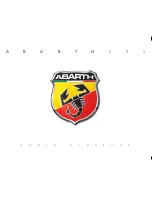
STARTING AND DRIVING
391
As an added safety feature, your vehicle has been
equipped with a tire pressure monitoring system
(TPMS — tire pressure warning system) that
illuminates a low tire pressure telltale (low tire
pressure warning light) when one or more of your
tires is significantly under
−
inflated. Accordingly,
when the low tire pressure telltale (low tire pressure
warning light) illuminates, you should stop and check
your tires as soon as possible, and inflate them to the
proper pressure. Driving on a significantly
under
−
inflated tire causes the tire to overheat and can
lead to tire failure. Under
−
inflation also reduces fuel
efficiency and tire tread life, and may affect the
vehicle’s handling and stopping ability.
Please note that the TPMS (tire pressure warning
system) is not a substitute for proper tire maintenance,
and it is the driver’s responsibility to maintain correct
tire pressure, even if under
−
inflation has not reached
the level to trigger illumination of the TPMS low tire
pressure telltale (low tire pressure warning light).
For vehicles sold in U.S.A.
This device complies with Part 15 of the FCC Rules. Opera-
tion is subject to the following two conditions:
(1) This device may not cause harmful interference, and (2)
this device must accept any interference received, including
interference that may cause undesired operation.
NOTICE:
This equipment has been tested and found to comply with
the limits for a Class B digital device, pursuant to Part 15 of
the FCC Rules. These limits are designed to provide rea-
sonable protection against harmful interference in a residen-
tial installation. This equipment generates, uses and can
radiate radio frequency energy and, if not installed and used
in accordance with the instructions, may cause harmful in-
terference to radio communications. However, there is no
guarantee that interference will not occur in a particular
installation. If this equipment does cause harmful interfer-
ence to radio or television reception, which can be deter-
mined by turning the equipment off and on, the user is en-
couraged to try to correct the interference by one or more of
the following measures:
D
Reorient or relocate the receiving antenna.
D
Increase the separation between the equipment and re-
ceiver.
D
Connect the equipment into an outlet on a circuit different
from that to which the receiver is connected.
D
Consult the dealer or an experienced radio/TV technician
for help.
FCC WARNING:
Changes or modifications not expressly approved by
the party responsible for compliance could void the
user’s authority to operate the equipment.
Summary of Contents for GX470 2006
Page 14: ...HOW TO USE THIS MANUAL x I n f o r ma t i o nP r o v i d e db y ...
Page 25: ...PICTORIAL INDEX xxi I n f o r ma t i o nP r o v i d e db y ...
Page 71: ...SWITCHES 46 I n f o r ma t i o nP r o v i d e db y ...
Page 123: ...INTERIOR EQUIPMENT 98 I n f o r ma t i o nP r o v i d e db y ...
Page 225: ...OCCUPANT RESTRAINT SYSTEMS 200 I n f o r ma t i o nP r o v i d e db y ...
Page 237: ...STEERING WHEEL AND MIRRORS 212 I n f o r ma t i o nP r o v i d e db y ...
Page 241: ...AIR CONDITIONING 216 21PY024 Air flow selection I n f o r ma t i o nP r o v i d e db y ...
Page 255: ...AIR CONDITIONING 230 I n f o r ma t i o nP r o v i d e db y ...
Page 320: ...AUDIO 295 22PY056 I n f o r ma t i o nP r o v i d e db y ...
Page 365: ...AUDIO 340 I n f o r ma t i o nP r o v i d e db y ...
Page 421: ...STARTING AND DRIVING 396 I n f o r ma t i o nP r o v i d e db y ...
Page 449: ...DRIVING TIPS 424 I n f o r ma t i o nP r o v i d e db y ...
Page 507: ...IN CASE OF AN EMERGENCY 482 I n f o r ma t i o nP r o v i d e db y ...
Page 515: ...MAINTENANCE 490 I n f o r ma t i o nP r o v i d e db y ...
Page 525: ...INTRODUCTION 500 I n f o r ma t i o nP r o v i d e db y ...
Page 587: ...ELECTRICAL COMPONENTS 562 I n f o r ma t i o nP r o v i d e db y ...
Page 590: ...BODY 565 FUEL TANK Capacity 87 L 23 gal 19 1 Imp gal I n f o r ma t i o nP r o v i d e db y ...
Page 599: ...BODY 574 I n f o r ma t i o nP r o v i d e db y ...
















































